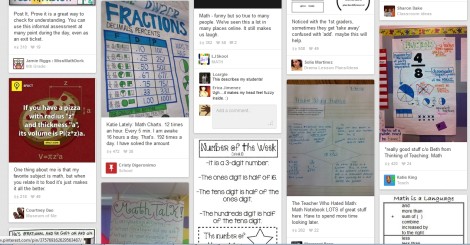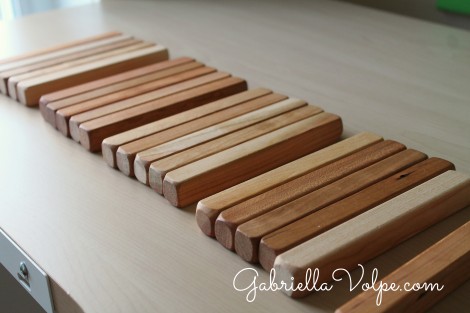This article is part of the 31 Days of Pinterest Hacks series. Find the main page for this series here.
As a teacher, I know the demands the education system makes when it comes to mathematics. I also know that children are both fascinated by numbers and intimidated by them.
You will find an extensive amount of math activities on Pinterest. There are many ways to teach a child fractions, geometry, and basic facts. But, how will you reach those standard goals with a neurodivergent or disabled learner?

I love posters created by teachers and students pinned on Pinterest. However, the concepts taught in this way may have little meaning for a disabled child.
Why numeracy may be a challenge for neurodivergent or disabled children
- Since math is symbolic, concrete thinkers may struggle.
- Some children may not comprehend what numbers represent.
- Memorizing basic facts and procedures may be challenging for children who require support with short-term memory.
- Testing and quizzing can bring about anxiety in some children. Many children (and adults, too!) experience what is known as “math anxiety.”
Suggestions for adaptations/modifications for numeracy
- Don’t teach math if the child is not developmentally ready. That doesn’t mean not exposing a child to numeracy. At the very early stages, model.
- Use real-life situations to introduce a child to math concepts. Rather than say, “This is how we add” or “Compare the sizes of these shapes,” do it. “Which vase has more flowers? Let’s count.” “Which block is bigger? Biggest?” “Let’s count how many flowers are in this vase and in this other one. 1-2-3 over here and 1-2 in this one. Let’s see. That’s 1-2-3-4-5. Five. There are five flowers in all.” Expose the child to authentic numeracy experiences.
- Use the body to learn math. A great way to internalize the patterns of mathematics is through the body. Get the body active, and the brain will absorb the concepts. We have math all around us. The rhythm of our heartbeat has been with us since conception. The rhythms of our days, weeks, and years—it’s all mathematical patterns.
- Play hopscotch and count upwards to 10
- Stamp feet or clap hands to a pattern
- Count by 2s while bouncing on a trampoline
- Drum and count by 10s
- Bounce a ball and recite the multiplication facts
- Walk from one side of the room to the other and count the steps to introduce measurement
- Dance a cha-cha to this pattern: “1-2- cha-cha-cha!”
- Explore through concrete, hands-on activities. Invite the child to work with manipulatives before asking them to work abstractly on math concepts.

No need to purchase new materials for manipulatives. Children can use blocks such as these in various ways. What do you already own?
- Use games. Games are an excellent way to get your family involved in learning. Count, compare, sort, explore patterns, estimate and measure through games, including board games. Adapt games to meet the needs of the learner.
- Use stories. Find books that include math concepts. Type “math story book for children” in a search engine to find a list!
- Avoid flashcards. Unless you’re playing the occasional game, and unless you know the child works well under pressure, I recommend avoiding flashcards. Flashcards create a pressure-to-perform which can bring on anxiety in most children (adults, too!) We want children to learn and explore math concepts, not constantly be tested on them.
- Allow the child to use their fingers. Never shame a child who uses fingers for counting or solving equations. Using fingers is a fantastic strategy that means the learner understands the base ten system.
What surprises you about teaching numeracy in neurodiversity- and disability-affirming ways?
If you’d like personalized strategies for numeracy, we can work through them together. I offer one-on-one consultations for parents and educators.
Resource
- Hooked on Math – (Affiliate link) Math app with hands-on practice materials
Math app with hands-on practice materials
Related Article

Loved this post!
I presume you also use counting songs? (5 little monkeys, One, two, buckle my shoe)
What do you think the boulier (10 series of 10 beads on a line… sorry, cant’ think of the English word) once the basic set of tens is understood?
How funny, Chantal, that I neglected to include songs in this post. I think because we sing all day long – for just about everything, it completely didn’t dawn on me, until I hit “Publish” to mention songs. Yes! Absolutely! Thank you for that.
I believe you’re talking about an abacus. In the classroom, I have found that it’s a quite the advanced mathematical tool to use. Children in the 6th grade struggled with using it. However, having an abacus for counting and counting on is very doable. And, what child doesn’t like to glide beads across a bar?
I have a tendency to count all day long. Even for things like transitions, “Ready, set, go! 1-2-3!” and off the seat he comes, etc. There are opportunities for using numbers in everything that we do.
Thanks for the input, Chantal.